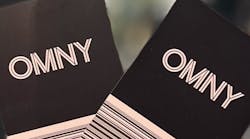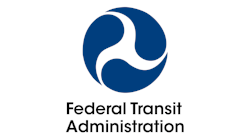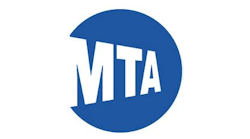OP-ED: Set sail for federal ferry funding
Here are some ways to pay for both New York City (NYC) Department of Transportation (DOT) Staten Island Ferry and NYC Economic Development Corporation (EDC) Private Ferries programs. Adding an NYC EDC ferry stop in City Island, Bronx, LaGuardia Airport, Queens, Canarsie and Coney Island, Brooklyn, South Shore, Staten Island and other locations currently not served could benefit thousands of commuters. The Federal Transit Administration (FTA) issued a Notice of Funding Availability on April 17, 2024. This is an opportunity to apply for $51 million in competitive grant funding for its Passenger Ferry Grant and $49 million for its Electric or Low Emissions Ferry Programs.
The Passenger Ferry Grant Program supports capital projects to buy, replace or modernize passenger ferries, terminals and related equipment. The Electric or Low Emitting Ferry Program supports transit agencies to buy ferry boats that reduce emissions by using alternative fuels or on-board energy storage systems.
FTA recipients such as NYC DOT can also choose to spend whatever they receive under their share of Federal Fiscal Year 2024 formula Section 5307 Urbanized Area $6.7 billion, Section 5337 State of Good Repair $4.2 billion or 5307 Passenger Ferry $51 million for ferry projects. The Federal Highway Administration has funding under several programs, including Congestion Mitigation Air Quality, Surface Transportation Program and others which can be flexed or transferred to FTA can also finance capital ferry projects.
NYC Mayor Eric Adams should ask NYC DOT Commissioner Ydanis Rodriguez to apply for these funds. NYC EDC President and CEO Andrew Kimball can do the same on behalf of his agency, Private Ferry Operators Program. This is another great example of Washington providing financial assistance to promote public transportation.
NYC can also apply for capital grants from the NYC DOT to assist in funding. FTA capital grants require a 20 percent local share. NYC DOT will provide 50 percent of the local share. The FTA capital grant ends up with 80 percent federal, 10 percent state and 10 percent NYC funding. NYC DOT also provides State Transportation Operating Assistance. Ridership on any transit service generates yearly federal transportation capital assistance via the annual FTA Section 15 annual reporting process.
The nation's largest ferry operator is the NYC DOT. The agency had 66,000 pre COVID-19 pandemic daily riders and is a direct recipient of FTA funding on behalf of the Staten Island Ferry System. There are other passenger ferry systems in Boston, Mass., New Orleans, La., San Francisco, Calif., Seattle, Wash., and others around the nation. Since passenger of the 1964 Urban Mass Transportation Act, all have benefits from capital, operating and planning grants from Washington.
Federal support for the NYC DOT Staten Island Ferry, like all transit systems, has been consistent and grown over time. When a crisis occurred, be it 9/11 in 2001, Hurricane Sandy in 2012 or COVID-19 in 2020, Washington, D.C., was there for us. Additional millions in federal assistance above and beyond yearly formula allocations were provided. The same held true In 2009, with passage of the American Recovery and Reinvestment Act.
Thousands of pre COVID-19 riders daily use ferries sponsored by the NYC EDC Private Ferry operators program. They connect various waterfront neighborhoods around NYC, including Soundview and Throgs Neck/Ferry Point in the Bronx, Astoria, Long Island City, Roosevelt Island, the Rockaways in Queens, East 79th St., East 34th St., Pier 11 Wall Street, Governors Island in Manhattan, along with Greenpoint, Williamsburg, Brooklyn Bridge, Brooklyn Army Terminal and Bay Ridge in Brooklyn, St. George, Staten Island Ferry Terminal to Pier 79 West 39th St. Midtown Manhattan with an intermediate stop in Battery City Park adjacent to the World Financial & World Trade Center.
Several past private ferry operators have come and gone. They could not financially survive without government subsidy. The New York Metropolitan Transportation Authority (MTA) bus, subway, Staten Island Railway, Long Island Rail Road, Metro-North Rail Road, along with NYC DOT Staten Island Ferry is subsidized by a combination of city, state and federal assistance for both capital and operating costs. All ferry services require similar subsidies to survive.
Farebox recovery rates vary based upon the trip, route and time of day. Any rush hour local or express bus, light rail, subway, ferry, commuter rail trip carries more riders than mid day, evening, overnight or weekends. Rush hour trips tend to have a better fare box recovery rate and require less subsidy.
There is always a fixed cost per hour for any mode of transportation. This includes equipment (bus, subway car, commuter rail car or ferry purchase) straight line depreciation of equipment over time and mileage, driver, engineer or ferry boat captain's salary, conductors, ticket takers, deck hands, fuel or power and maintenance of equipment.
NYC Mayor Eric Adams needs to convince the MTA Board to support the NYC EDC private ferry program fare structure of $4.50 per ride to also include cross honoring a free transfer to a NYC Transit bus or subway using the MTA Metro or OMNY Fare Card. Riders could purchase weekly or monthly passes for discounted fares. These could be supplemented by using Transit Checks, which will further reduce the cost per ride.
Enjoy the fresh air and breeze that only waterborne transportation can provide. Riding a ferry can be less stressful than traveling by bus, subway or commuter rail.

Larry Penner
Larry Penner is a transportation advocate, historian and writer who previously served as a former director for the Federal Transit Administration Region 2 New York Office of Operations and Program Management. This included the development, review, approval and oversight for billions in capital projects and programs for New Jersey Transit, New York Metropolitan Transportation Authority, NYC Transit bus, subway and Staten Island Railway, Long Island and Metro North railroads, MTA Bus, NYCDOT Staten Island Ferry along with 30 other transit agencies in New York and New Jersey.






